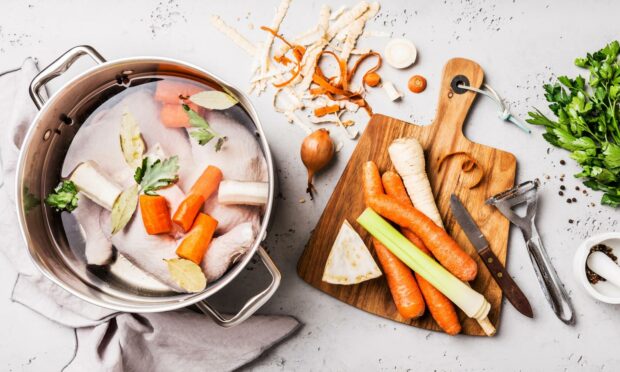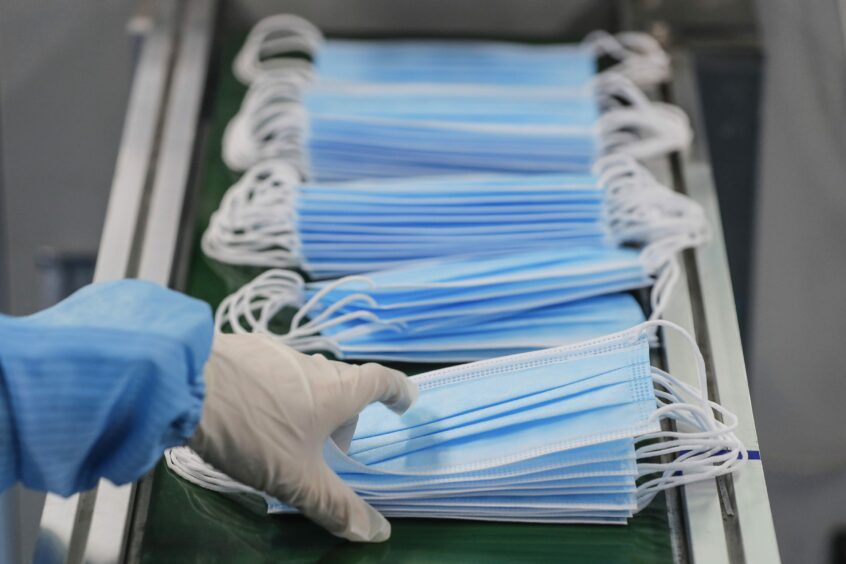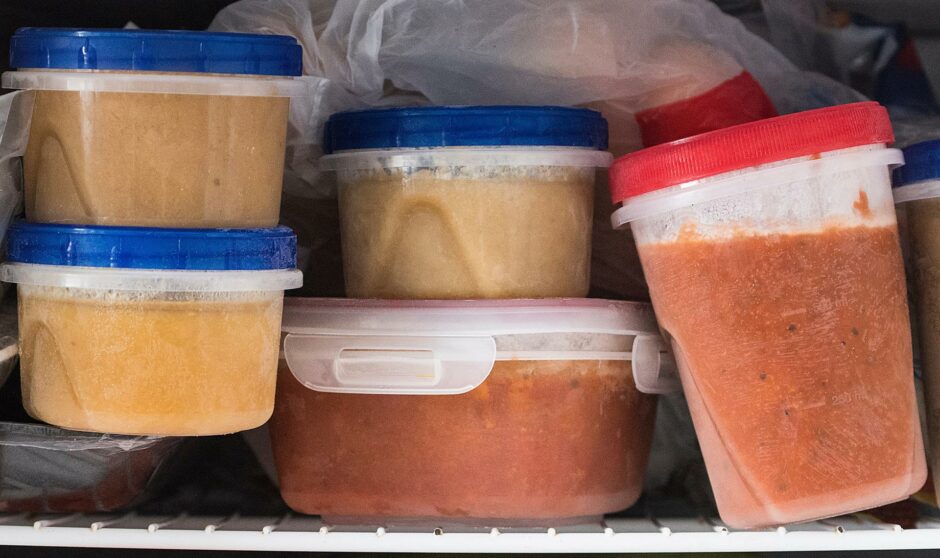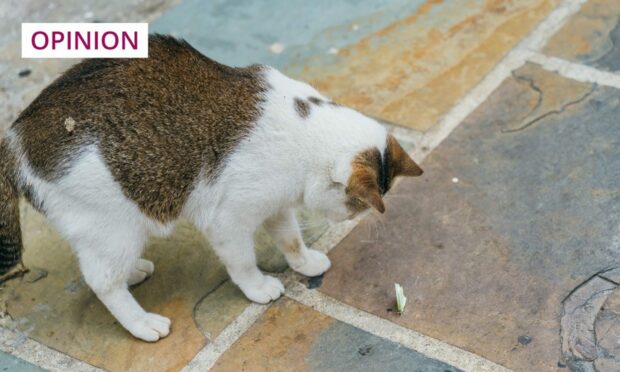My granny was awfully good at making soup. It was, ahem, her souperpower.
That woman could strongarm almost any vegetable into tasty soup at the drop of a hat and for that, amidst many other qualities, not least her peerless tattie scones, I revere her.
Thanks to Granny and also to my mother whose skills almost, but not quite, match Granny’s, much of my happiness has pivoted on the availability or otherwise of a decent bowl of soup.
This is of course far from unusual in the frozen north, where hot soup is practically a legal requirement on cold days. Not for us the chilly prospect of a sandwich, nor the exotic allure of the panini or the wrap. Soup, all the way. If it isn’t on the menu, is it really lunch?
It’s just an inescapable part of life’s journey up here, from the ladle to the grave. We went to school, we came back, we had soup. Hungry? Soup. Ill? Soup. Going out? Soup. Heartbroken? Soup. Sometimes green, often red, always delicious. Generations of love in a bowl.
Something whispered to me that soup might help
Fast-forward to Covid. In the early days, like most of us, I felt powerless and more than a little afraid. Before the vaccine rollout, we didn’t have anything with which to fight the virus apart from masks, hygiene and social distancing and the daily news of people’s suffering was almost unbearable.
What could I do to make a difference? The answer, of course, boiled down to soup. Something deep within me whispered that in the event of the unthinkable happening to my family, soup might help. Here’s how I did it.
You start with a whole chicken. Then you haul out your biggest pan, add oil or a knob of butter and sizzle the chicken on all sides. Drown it with cold water, add bay leaves, peppercorns, salt and pepper, bring everything to a simmer and poach it gently for an hour or so until it’s cooked and the meat is falling from the bones. You have by this point achieved excellent stock which already tastes incredible and, for a really unwell person, might be just the ticket, sipped just like that.
Secret to ‘Awfully Good Sooop’
But we’re pressing on. In a different pan, cook chopped onion, carrot, leeks and celery in oil or butter until they are done. Then add your chicken stock, plus any other vegetables you like. Kale, parsnips, beetroot, squash, tatties, neeps, whatever. You do you. Shred the chicken meat and stir in as much or as little of it as you please. Taste and trust yourself with seasoning. You have achieved soup. My granny salutes you. Actually, she probably doesn’t; she was picky.
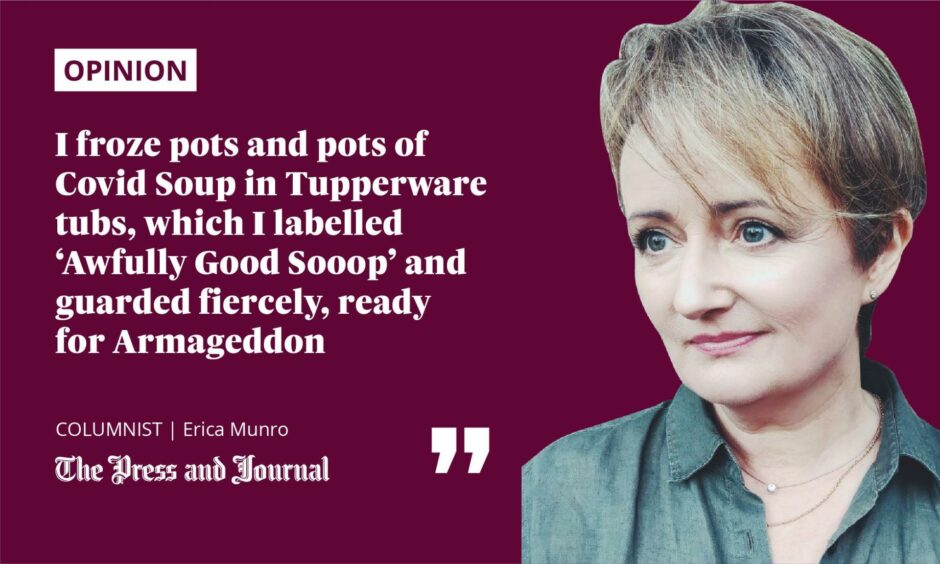
Her three top secrets for splendid soup, passed down through generations and blown wide open here in a single, reckless overshare, were that firstly, in the unlikely event of the soup being wersh, you stir in a spoonful of redcurrant jelly. Secondly, she kept the green parts of her leeks back, only adding them for the final few minutes so that they retained their vivid colour rather than turning that sort of sad green shade that should only ever be seen on a Farrow & Ball paint chart, above a name like ‘Disappointment’, or ‘Oil Tank’. And thirdly, parsley. Lots of it. Chopped fine and stirred through right at the end, with a little left over to sprinkle on top.
I viewed Covid soup as a warrior might their sword
I froze pots and pots of Covid Soup in Tupperware tubs, which I labelled ‘Awfully Good Sooop’ and guarded fiercely, ready for Armageddon. Those blocks stayed unused even on nights when there wasn’t anything in the house for tea, though I had enough to build the world’s most nutritious igloo. I viewed my soup as a warrior might their sword. Not today, Covid. I’m ready for you.
I now understand why some people stockpile foodstuffs in case of disasters. In the States they’re known as Doomsday Preppers, which has a pleasing, 80’s pop band ring about it. Tons of non-perishable foodstuffs, stashed in bunkers, like squirrels hoarding nuts. But unlike squirrels, they don’t do it just for the food. It’s about comfort and control, too, the idea of doing something positive in the face of something unimaginable. In my own way, I became like them. With soup.
Slowly, though, we whittled down my soupbergs, lunch by yummy lunch, in a gradual de-escalation as Covid, and my fear, began to ease a little. It’s all gone now. I hope never to feel that way again but if I do, I know where to turn for comfort.
Erica Munro is a novelist, playwright, screenwriter and freelance editor
